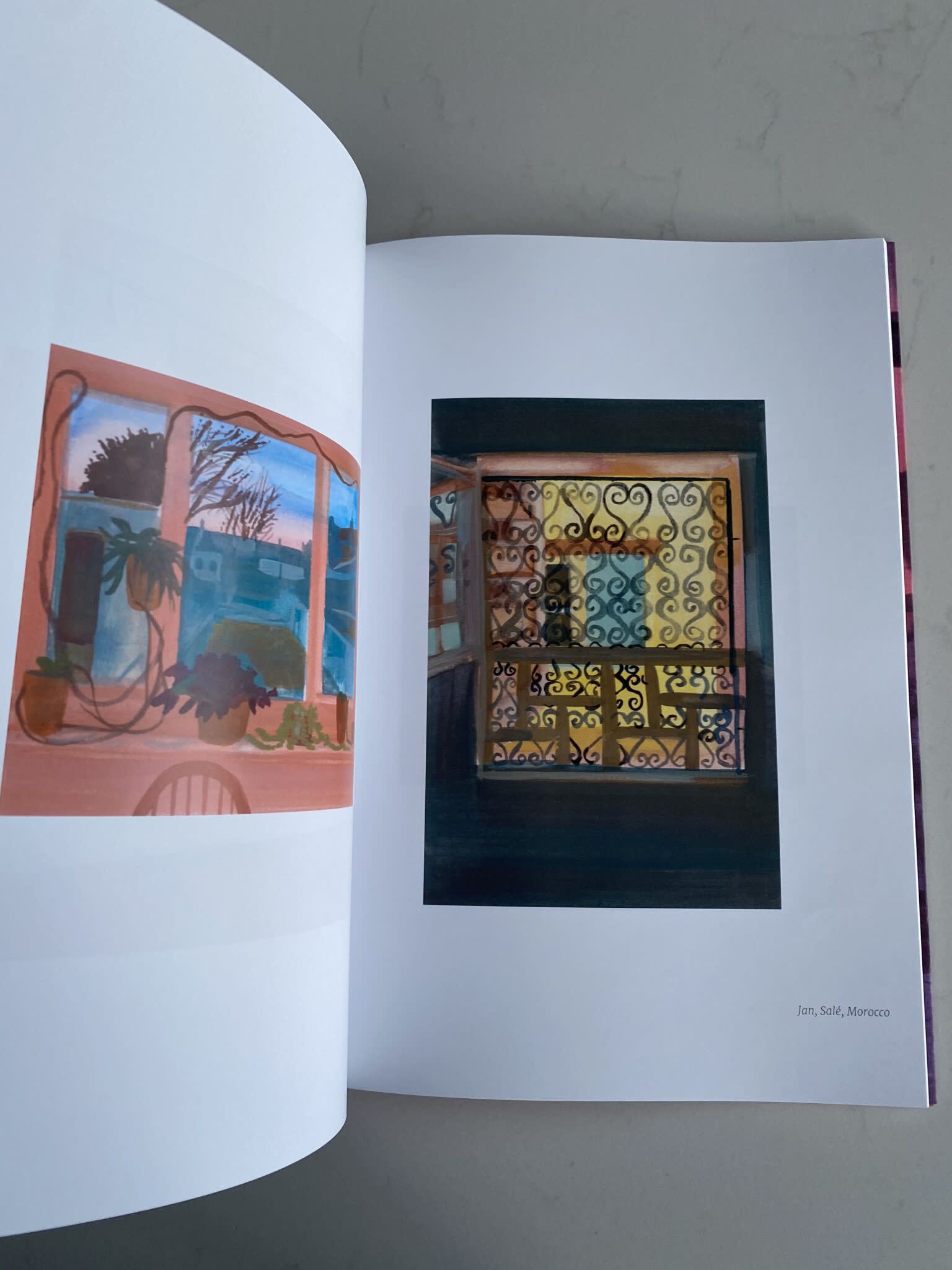-
Back in March 2020 when the first national lockdown began, like many people, painter Catherine Knight found herself at home with her two small children in isolation and unable to work in her studio. Her immediate reaction was to reach out to the world via social media, inviting people to take images of the views from their windows and to email them to her. Catherine then used these images to create a series of small gouache paintings during the evenings of lockdown, when her children had gone to bed. For many of the participants, and for Catherine in particular, this helped them to reaffirm a connection to the outside world during the global pandemic. Catherine received images from 16 different countries around the world and has released her first-ever art book Isolation Windows featuring 81 of the paintings she completed from March to July of the first national lockdown in the UK.
In the last days before the second national lockdown, we headed off to her Bristol studio to get the first glimpse of her new book as it arrived, hot off the press.
-
Click on the vido above to hear our interview with Catherine about the Isolation Windows Project and to see a slideshow of each of the paintings that are featured in the book.
-
Please contact the gallery to enquire about available paintings from the Isolation Windows series. Catherine’s art book ‘Isolation Windows’ is available on the website priced at £25+ P&P


The book brings together 81 of Catherine’s Isolation Windows paintings made during the first national lockdown of 2020. With an introductory essay by lecturer in Fine Art and Art and Visual Culture at the University of the West of England, Lizzie Lloyd and 82 full-colour illustrations of the gouache paintings, this makes a beautiful and timely book.
“This act of shared imagining is timely, offering sensations of closeness with friends and strangers alike. Though actual human figures never find their way into her paintings explicitly, they are ever-present by implication, through traces of everyday actions: the top of a chair tucked under a table, a towel drying on a railing, a window left ajar, a curtain hurriedly not-quite-drawn. These domestic objects and adornings become proxies for the absent humans; the scenes as a whole, like still-life glimpses into the lives of others.”
Extract from the essay “A view of one’s own” by Lizzie Lloyd, 2020


